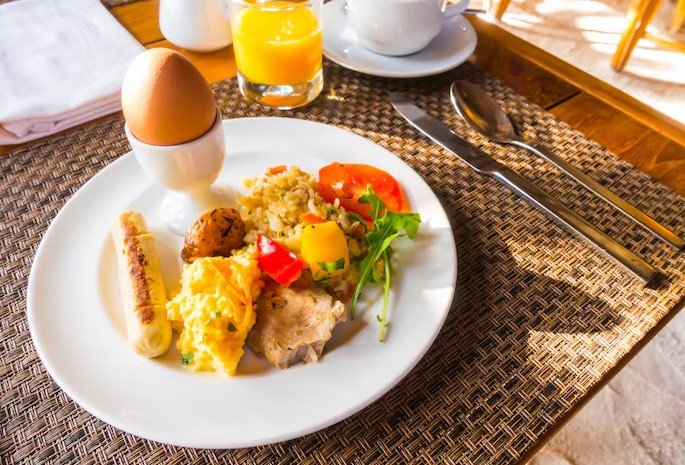In the heart of Umm al-Fahm, chef Rana Jabarin has opened Mama’esh Zaatar, a family-run restaurant serving fresh breakfasts and pastries from a traditional tabun oven. As of September 2025, she waits for Jewish customers from Tel Aviv and beyond, drawing on her past experience cooking for gallery openings in the city to build bridges through food.
A Fresh Start in Umm al-Fahm
Rana Jabarin, a skilled chef with years of experience, launched Mama’esh Zaatar in Umm al-Fahm this year. The restaurant focuses on homestyle meals that blend Arab-Palestinian traditions with familiar flavors to appeal to a wide audience.
Located in a bustling area of the city, the spot aims to become a local favorite. Jabarin runs it with her family, emphasizing fresh ingredients and authentic cooking methods. Recent visitors praise the welcoming atmosphere and quality dishes, which have sparked interest online and in local media.
The opening comes at a time when cultural exchanges in Israel are gaining attention. With tensions in the region, efforts like this highlight food as a way to connect people. Jabarin’s venture adds to a growing trend of restaurants promoting unity through shared meals.

From Tel Aviv Galleries to Local Tables
Jabarin built her reputation by catering events at art galleries in Tel Aviv. She prepared dishes for openings, where diverse crowds enjoyed her creations. Now, she wonders why those same people won’t visit her new place in Umm al-Fahm.
Her time in Tel Aviv exposed her to mixed audiences, including Jewish art lovers. This background fuels her hope to draw them north. “I cooked for them there,” she says in recent interviews. “They should come eat here too.”
This shift reflects broader changes in Israel’s food scene. Chefs like Jabarin are moving from urban centers to smaller towns, bringing innovation and inviting cross-cultural visits. Events in 2025, such as food festivals promoting regional cuisines, support this movement.
In Umm al-Fahm, known for its art gallery turned museum, Jabarin’s restaurant fits into a cultural landscape. The city’s first Arab museum, recognized last year, draws visitors interested in Palestinian art and history.
Highlights of the Mama’esh Zaatar Menu
The breakfast for two stands out, served on a large platter with a mix of items. It includes both traditional and modern options to suit various tastes.
Diners can expect homemade jams, pickled olives, and fried cheese. These pair with yogurt granola and tuna salad for a balanced meal.
To give a clear view of popular offerings, here is a table of key menu items and their descriptions:
| Dish | Description | Price (ILS) |
|---|---|---|
| Labneh Balls | Soft white cheese drizzled with olive oil | 25 |
| Za’atar Mix | Dried herb blend with fresh bread | 15 |
| Makdous | Pickled eggplant stuffed with walnuts | 20 |
| Pastrami Plate | Sliced meat with sides | 30 |
| Tabun Pastries | Oven-baked goods with various fillings | 18 |
This selection shows Jabarin’s blend of flavors. Pastries from the tabun oven, a clay structure for baking, add an authentic touch.
Building Bridges Through Shared Meals
Jabarin’s call for Jewish customers aims to foster understanding. Food has long served as a tool for dialogue in diverse societies. In Israel, similar initiatives have succeeded in places like Jerusalem and Haifa.
For instance, joint cooking classes and pop-up events in 2025 have brought communities together. Jabarin hopes her restaurant joins this wave, turning meals into moments of connection.
Challenges remain, such as travel concerns amid regional issues. Yet, positive stories emerge, like Jewish groups visiting Arab towns for cultural experiences. Jabarin’s patience reflects optimism for change.
She points to her Tel Aviv days as proof that food transcends barriers. By offering familiar dishes alongside traditional ones, she invites curiosity and repeat visits.
Local leaders support such efforts. In Umm al-Fahm, community programs encourage tourism, boosting the economy and promoting peace.
Challenges and Future Hopes
Opening in 2025 brings hurdles, including attracting a diverse crowd. Jabarin notes fewer Jewish visitors so far, possibly due to distance or perceptions.
To address this, she plans events like open breakfasts and collaborations with Tel Aviv artists. These could draw more people and highlight the restaurant’s role in unity.
Looking ahead, Jabarin envisions expansion. She might add dinner options or catering services, building on her gallery experience.
Success stories from similar spots inspire her. Restaurants in mixed cities report growth through inclusive menus, showing potential for Mama’esh Zaatar.
The Broader Impact on Israeli Cuisine
Jabarin’s story ties into evolving food trends in Israel. Fusion cuisines are rising, with chefs mixing traditions to create new favorites.
Recent data from 2025 shows a 15 percent increase in cross-cultural dining experiences. This growth stems from social media buzz and tourism pushes.
Key factors driving this include:
- Social media shares of unique meals
- Government programs for cultural tourism
- Rising interest in authentic regional foods
These elements position Mama’esh Zaatar for success. Jabarin’s approach could set an example for others.
As Israel navigates complex times, stories like this offer hope. Food remains a simple yet powerful way to connect.
What do you think about restaurants bridging communities? Share your thoughts in the comments and spread the word to friends who love great food.
